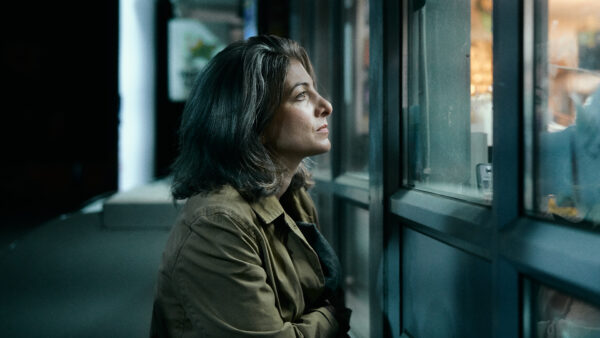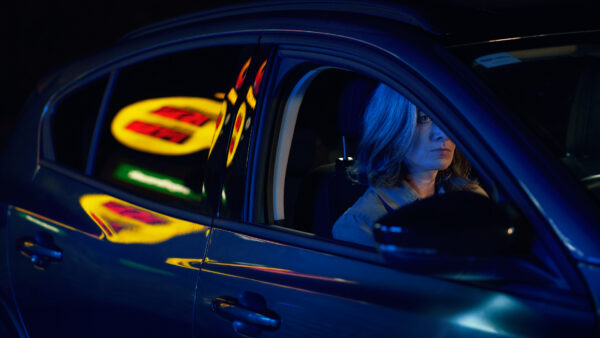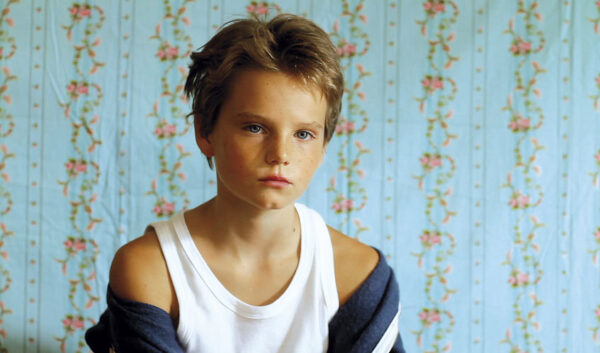DL: The film is a very sensitive and authentic depiction of neuro-divergence in a child. What kind of research did you have to do when developing the script and making the film?
AF : I started writing Oisín as a personal project right after graduating college in 2017. At the time I would only write as an outlet without any expectation for my screenplays however as years went on I saw myself coming back to this story and its characters and the stories they were navigating individually. I was diagnosed with autism at age 21 putting a lot of my struggles and key moments of my childhood in a very clear perspective, so when the pandemic hit Ireland at the start of 2020 I decided to take my own experiences and process them through the lens of Oisín and Clara's characters. From the start, I knew I didn't want to write about the autistic experience rather I wanted to tell one autistic story so I in turn the level of research was more introspective when it came to Oisín's character.
DL : How did you go about casting the part of Oisin, and then working with Rian Sheridan? His character is integral to the story, and it’s a remarkable performance for such a young actor?
 AF : We reached out to various acting companies with particular interest on children with autism, Asperger's, ADHD, dyspraxia and dyslexia. For the auditions, I wrote a small monologue where Oisín describes how to make the perfect bowl of Cheerios and while I had all shortlisted kids perform the monologue verbally I also asked them to describe this in a non-verbal performance. What struck me the most about Rian Sheridan was how well he understood stims as one of the key modes of communication for an autistic person and how they don't necessarily represent a negative feeling, rather an overwhelming need to express oneself. We were extremely lucky to find out that Rian's younger brother Josh is non-verbal and as such this aided us greatly when it came to pinning down how Oisín and his mother communicate during rehearsals. Rian's tender understanding of non-verbal communication along with certain aspects of my autistic experience allowed us to come with Oisín's own character and his ways of communicating and letting people in. On set, Rian was incredible at understanding what each scene meant for Oisín and the people around him. He really was the start of the show!
AF : We reached out to various acting companies with particular interest on children with autism, Asperger's, ADHD, dyspraxia and dyslexia. For the auditions, I wrote a small monologue where Oisín describes how to make the perfect bowl of Cheerios and while I had all shortlisted kids perform the monologue verbally I also asked them to describe this in a non-verbal performance. What struck me the most about Rian Sheridan was how well he understood stims as one of the key modes of communication for an autistic person and how they don't necessarily represent a negative feeling, rather an overwhelming need to express oneself. We were extremely lucky to find out that Rian's younger brother Josh is non-verbal and as such this aided us greatly when it came to pinning down how Oisín and his mother communicate during rehearsals. Rian's tender understanding of non-verbal communication along with certain aspects of my autistic experience allowed us to come with Oisín's own character and his ways of communicating and letting people in. On set, Rian was incredible at understanding what each scene meant for Oisín and the people around him. He really was the start of the show!
DL : Your background is as a cinematographer but have written and directed three short films in recent years. Do you have a preference for one or the other, or are they simply different facets of the same creative process?
 AF: I think it's worth nothing that I never thought I'd direct a film in my life. For a long time I thought that working with cameras and the technicalities that they carry was the way I could carry my voice into the industry. However, it was the lack of representation I saw on the sets I was taking part in that made me want to take matters into my own hand and fill it. I really enjoy directing and finding my filmmaking voice and I do think I have many more things to say with my films but cinematography will always be my one true love. After all, the first shot that entered my head while writing Oisín's first draft was the washing machine POV shot you see halfway through the film.
AF: I think it's worth nothing that I never thought I'd direct a film in my life. For a long time I thought that working with cameras and the technicalities that they carry was the way I could carry my voice into the industry. However, it was the lack of representation I saw on the sets I was taking part in that made me want to take matters into my own hand and fill it. I really enjoy directing and finding my filmmaking voice and I do think I have many more things to say with my films but cinematography will always be my one true love. After all, the first shot that entered my head while writing Oisín's first draft was the washing machine POV shot you see halfway through the film.
DL : Who are your filmmaking heroes?
 AF : I really like the early work of Celine Sciamma. I remember watching Water Lillies and Tomboy for the first time at the beginning of the lockdown in Ireland and I fell in love with how her films operate on a more visual and intrapersonal way rather than hinging on dialogue. On the cinematography side of things I really admire Ari Wegner - the short she shot, Bino, was quite inspirational for the quiet moments found in Oisín - as well as Kate Arizmendi who works with very contrasting and intense artificial lighting a lot.
AF : I really like the early work of Celine Sciamma. I remember watching Water Lillies and Tomboy for the first time at the beginning of the lockdown in Ireland and I fell in love with how her films operate on a more visual and intrapersonal way rather than hinging on dialogue. On the cinematography side of things I really admire Ari Wegner - the short she shot, Bino, was quite inspirational for the quiet moments found in Oisín - as well as Kate Arizmendi who works with very contrasting and intense artificial lighting a lot.

